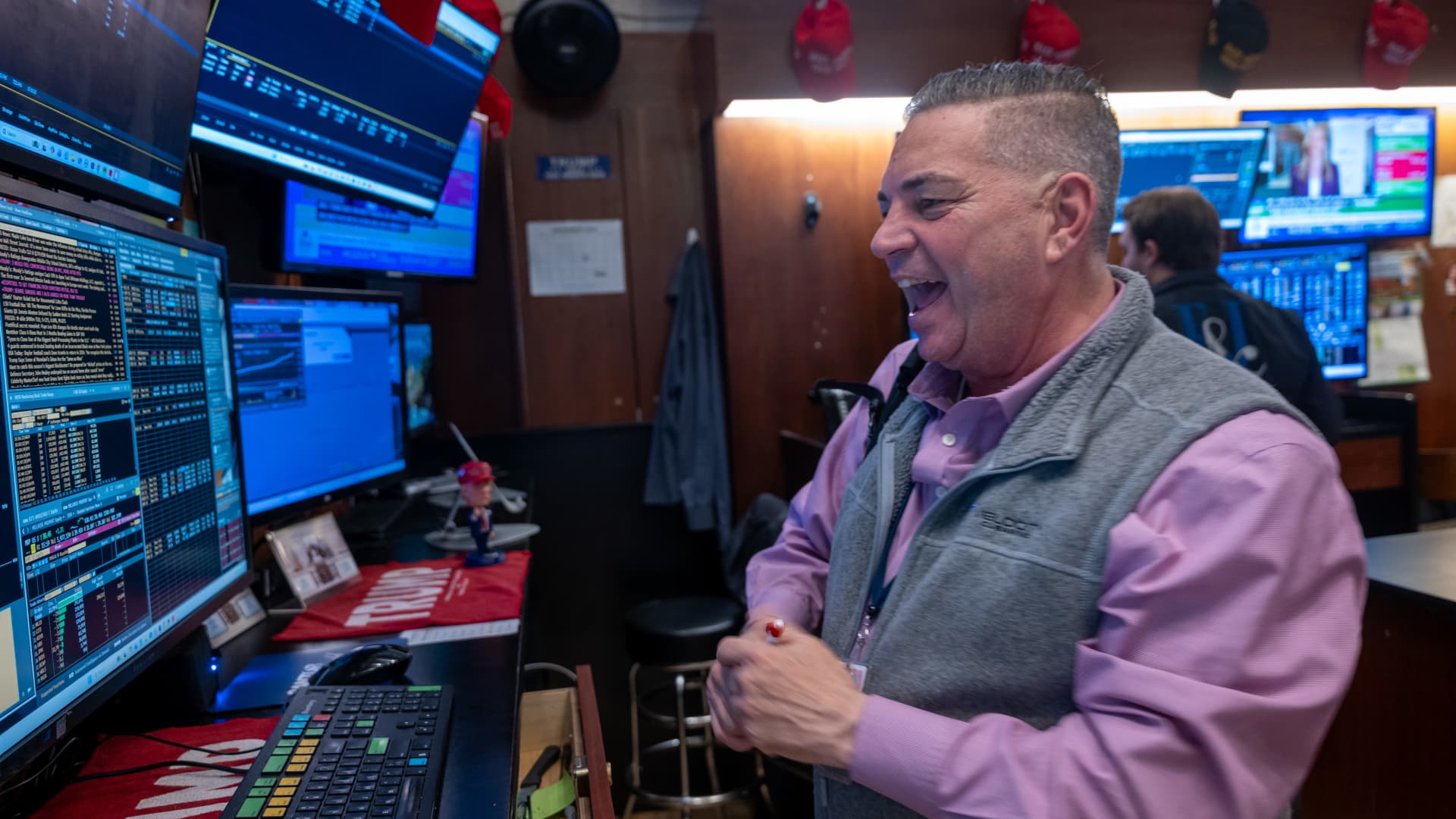(These are the market notes on today’s action by Mike Santoli, CNBC’s Senior Markets Commentator.) The market continues to make progress in repairing the minor rupture of the past few weeks, seizing on oversold conditions, a dovish turn in Fed-policy expectations, regained momentum in pockets of Big Tech and the restored rotational rhythms that have allowed volatility to bleed lower. The S & P 500 has formed three days of higher highs and higher lows since lifting off what now appears the bottom rail of the fourth-quarter trading range near 6550. It’s gone station-to-station: Closes right about 6600 Friday, 6700 Monday and Tuesday the rally has been hovering near 6750. The index is now just above its 20-day average (a hurdle that oversold markets need to surmount decisively to prove it’s having more than a reflex bounce). Thursday’s high, set before the 3% intraday trapdoor reversal, is less than half a percent above. It’s pretty mechanical, though in a benign way that reflects cleaner investor risk exposures after a 5% index reset and a purge of over-aggressive positions in lower-quality stocks. Once Tuesday morning’s 7% drop in Nvidia failed to rattle the overall tape, confidence in its ability to stay in balance seemed to carry it methodically higher. As the market continues to re-rank the contenders in the AI race further in favor of Alphabet , with Meta Platforms catching a bid on its reported usage of Google chips, it’s the non-tech cyclicals that were beneficiaries of the oscillations today. Equal-weighted consumer-discretionary up 2.7%, industrials up 1.6%, regional banks ahead by nearly 3%. After two days of seemingly dispositive Fed rhetoric rebuilt the probability of a December rate cut, a Bloomberg report that National Economic Council director and administration loyalist Kevin Hassett might be the leading candidate as the next Federal Reserve chair seemed briefly to nudge the markets in the direction they were leaning already. The two-year Treasury yield twitched lower to about 3.45% from 3.5%, reacting to Hassett’s perceived extreme dovishness. Coming on a day when consumer confidence slouched further and retail sales were mixed at best, perhaps it’s insulating the Street from further “soft patch” concerns. But arguably, the stakes around short rates aren’t all that high: The Fed has cut 150 basis points in 14 months, the next move or two are almost surely also cuts, and very few believe either that rates are very far above neutral or would quickly heal things like the housing market with incremental moves. For now, Treasury yields are down across the curve, underscoring how the market is in no mood to price in an inflation flare-up soon, even when talk of more-aggressive Fed easing gets loud. The Russell 2000 is of course outperforming coming out of a pullback and with higher-beta and rate-sensitive groups leading. It’s pretty textbook, but the burden of proof is high here, given we’ve played with today’s levels as far back as four years ago. As a plus, the super-speculative names with the highest weights in the Russell 2000 ( Credo Technology , Bloom Energy , IonQ and the like) were down Tuesday. The MEME meme-stock ETF was off some 3.8% and Robinhood is flat. It seems that thanks to the crypto carnage gouging holes in small-trader portfolios, this might not be a buy-the-dip episode led by retail players. Earnings forecasts have come up enough to sand the edges off valuation concerns a bit. Holiday-week and year-end seasonal factors must be considered a plus, even though such patterns have been a bum steer most of this year. We got some moderately elevated fear readings that are now giving way to some relief. Still there are hurdles above and bulls have more to prove. The S & P 500 is right where it was at the early-October high before the initial Oct. 10 air pocket kicked off the turbulent testing phase. So, anyone who chased the S & P above 6750 or so probably doesn’t feel it was all that smart or rewarding.





